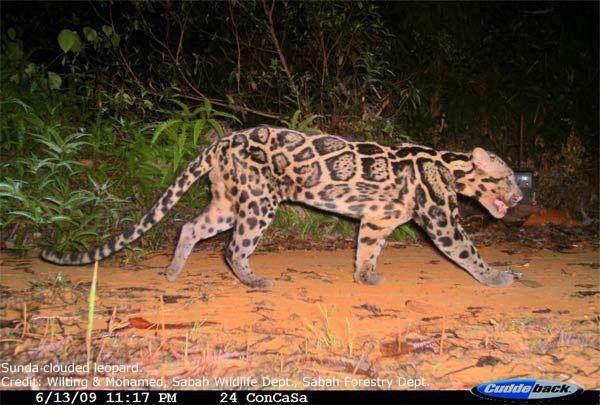Elusive Clouded Leopard Species Actually Two Unique Subspecies


A species of clouded leopard that was only recently identified is actually made up of two different subspecies, new research finds.
Clouded leopards are found in certain regions of Asia, including the Himalayas, southern China, Taiwan and the Malaysian Peninsula, according to the Smithsonian National Zoo in Washington, D.C. All clouded leopards were thought to be of the same species until genetic analyses revealed in 2006 that leopards on the islands of Sumatra and Borneo were actually a separate species, the Sunda clouded leopard (Neofelis diardi). (The species on the Asian mainland is called Neofelis nebulosa.)
A new genetic analysis compared leopards on Sumatra to those on Borneo and found a further distinction, the BBC reports.
"Although we suspected that Sunda clouded leopards on Borneo and Sumatra have likely been geographically separated since the last Ice Age, it was not known whether this long isolation had caused them to split up into separate subspecies," study member Andreas Wilting of the Leibniz Institute for Zoo and Wildlife Research in Berlin told the BBC.
The two new subspecies are a Bornean subspecies, N. d. borneensis, and the Sumatran subspecies, N. d. diardi. [Learn more about the new subspecies here.]
Sunda clouded leopards likely split off on their own evolutionary branch from the mainland clouded leopard about one million years ago. Despite their name, clouded leopards are not actually a kind of leopard, but are completely separate from the genus that includes lions, tigers, leopards and jaguars.
Since 2008, clouded leopards have been listed as vulnerable by the International Union for the Conservation of Nature. Clouded leopards are threatened by hunting, as their pelts are highly prized and have ceremonial meaning in Taiwan, according to the National Zoo. Deforestation and habitat destruction are also concerns.
Get the world’s most fascinating discoveries delivered straight to your inbox.
Clouded leopards are reclusive by nature and therefore hard to observe in the wild. The first footage of the cats in the wild to become public was only released last year. Clouded leopards have larger, more cloud-like spots than other leopards, hence their name.
The results of the new research are detailed in published in the journal Molecular Phylogenetics and Evolution.



